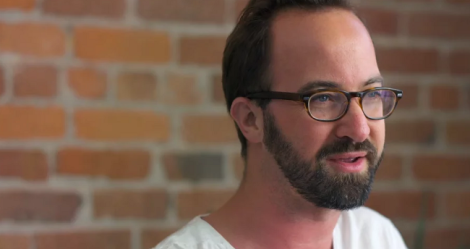
The Third Place: Why Virtual Reality Might Transform eCommerce Into Social Spaces
“VR is finally here,” announced Oculus CEO Brendan Iribe in September. Nothing new with this you’d have to agree. But what is uncertain is how it will be predominantly used. Entertainment? film? health, gaming? Online shopping?
As Oculus’s chief scientist Michael Abrash is quoted as saying in The Atlantic today “Once you’ve experienced it, it’s obvious that it’s going to change the world in a big way.”
Social “reality theatre”
Allison Crank, a British film-maker who has just completed her thesis in Contextual Design at Eindhoven has turned her attention to eCommerce (The Reality Theatre)and the possible impact VR will have.
Crank looks at bricks and mortar retail through the prism of sociologists concept of ‘third place” (“inclusively sociable places” ) a concept made popular by sociologist Ray Oldenburg. She writes how with the growth of eCommerce bricks and mortar retail is in danger of becoming obsolete. eCommerce at the moment lacks the social element (for example shopping with friends) and ‘theatre’ present in bricks and mortar retail but with virtual reality (VR) there is now an opportunity for the social aspect (multiplayer online shopping) to be brought into eCommerce and in turn for online retail to become a “third place”.
As Crank writes:
Shopping is a public performance whose drama is set at stores—theatres where you can be both performer and spectator. Today, shopping architecture is the most common form of “third places”—spaces for public activities where one can see and be seen—whose settings play an essential role in the staging and shaping of history and culture. However, with the rise of online shopping and cyberspace, today, shops and malls are facing rapid obsolescence.
Earlier this year I wrote a post about how eCommerce is posed to play an important role in VR and mentioned a 2013 paper by Manveer Kaur Mann, a Professor of STEM Education and Professional Studies a Old Dominion University (USA) who outlines the key reasons why online shopping does not have more consumer uptake than it currently has. Mann says its because of the lack of rich visual information (Crank might suggest it’s also because of the lack of the social element). As Mann et al writes:
“…a key barrier to further consumer adoption of online shopping is that lack of rich sensory information in the online environment (Park, Lennon & Stoel, 2005)…this restrains consumers ability to fully evaluate products and increase the risks associated with online shopping.”
As Crank writes shopping is a “public performance” and:
Stores are theatres where you can be both performer and spectator. What if we designed stores as stages? What if shopping were a script for new stories?
The Reality Theatre was shown at the Design Academy Eindhoven as part of Dutch Design Week 2015. You can view Crank’s thesis and work here.
[This article first appeared at Medium.com on 18 Nov 2015].
 Previous Post
Previous Post


